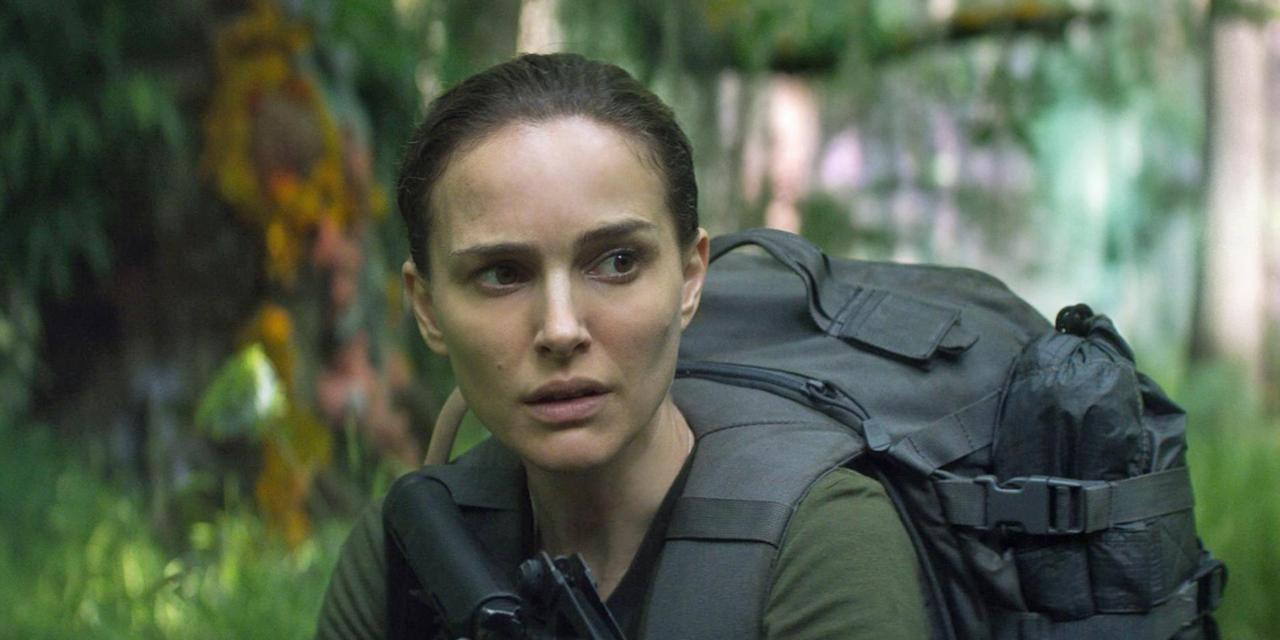
Seeing a film in the cinema is more than just seeing it a film on a big screen. Sound design is often built for cinema speakers and the effect isn’t quite the same when played out of a television at home. Also it’s a lot harder to get distracted in a cinema when the lights are off and all there is to do is look at the screen.
Put simply a film you don’t like but have only ever seen on a small screen may feel very different when seen in a cinema. This is a list of ten great films that have those certain qualities that really should be appreciated on the biggest, loudest cinema screen possible.
1. Once Upon a Time in the West
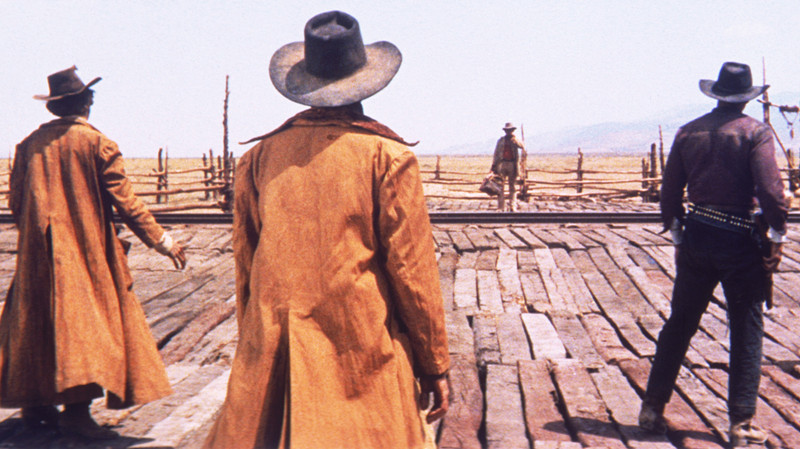
The opening sequence of this film alone is enough to justify its place on this list. Sergio Leone Who had already established himself as a master of the Western stand off with The Good, The Bed and The Ugly. Anyone familiar with a Leone set piece will recognise the fantastic score by Ennio Moricone but also the sheer length of the sequences. With Once Upon a Time in the West the build up of the opening shoot out is truly amazing.
Never has a bunch of men doing, essentially nothing seemed so cinematic; of course what you’re watching is Leone build atmosphere, making the audience feel the heat and the glare of the sun and to letting the tension grow and grow longer than you’d ever think possible so by the time the action actually starts you’re almost screaming in your seats.
Written by three young Italian filmmakers Bernardo Bertolucci, Dario Argento and Sergio Leone (winning the award for script room we’d most like to be a fly on the wall for) with the intention to see how they could manipulate and move an audience with a genre that had already been done to death. Key to this was the casting of Henry Fonda (almost exclusively a cinematic hero) in the role of the villain, a smiling, psychopathic gunman; audiences were audibly shocked when they first saw him.
Once Upon a Time in the West is also significant as it marks a distinctly darker change in Leone’s filmmaking. His Spaghetti trilogy had been getting longer and more expansive with each instalment. In this case the main plot revolves around protecting a widow from the increasingly threatening Henry Fonda.
It’s not an adventure of gold or a struggle to free a town; it’s a survival film. This film is worth seeing not just for it’s expertise but as a changing point towards a darker cinema of the 1970s where the film’s creators would go on to make some of their best work.
2. You Were Never Really Here
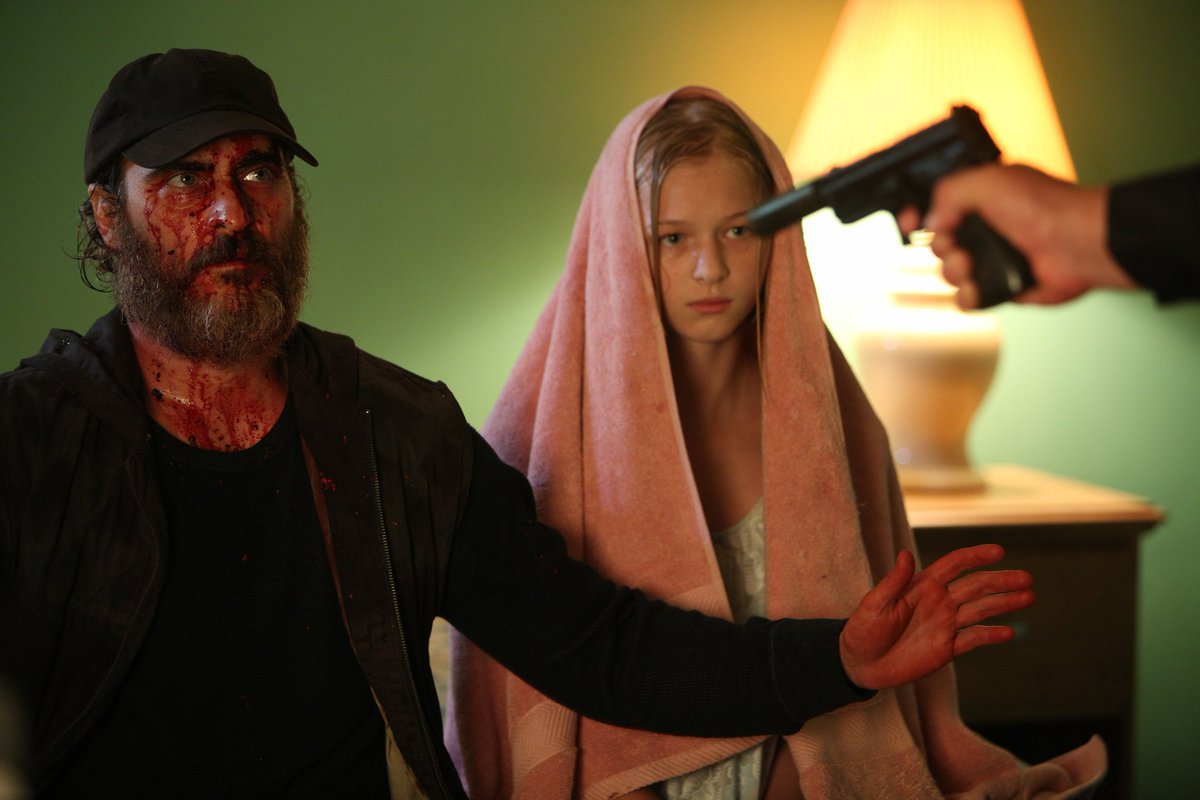
The cinema of Lynne Ramsey is something quite special. Her films manage to pack in so much information into (especially in this case) their quite short running times. Ramsey’s films have left such an impact on audiences because they seem to constantly evolve through their endless ability to be interpreted and then reinterpreted.
Ramsey has stated that she concentrates on either of two things when creating a shot: fill the picture with a specific image, or fill the picture with a specific sound. While this may be argued is the case for all cinema ever, Ramsey has such a strong cinematic vision that when cut together these simplistic shots fill the film with message, meaning and poetry.
You Were Never Really Here is a film about a hitman. It’s also a film about unusual parent and child relationships. And it’s a film about one man’s fragile psychosis. Watching it you almost have to give in to the film and let it’s images and it’s sound just wash over you. In one shot (of a bloody hammer and gold chain) we learn enough about our lead character to make an estimate of what he’s like. But at the same time we haven’t actually seen what he’s done.
The after image of violence is almost more effective than actually seeing it, not least because the main character’s motivations for killing and his behaviour as a killer remains a mystery to us. Instead we’re left with the implied threat of danger while instead what we get to see is him looking after his mother and rescuing a little girl.
You Were Never Really Here is a film that deserves to be seen on a big screen in the dark, because for one thing it’s probably the best way to hear Johnny Greenwood’s crashing and smashing score that appropriately reflects the chaos inside the main character’s head. But Lynne Ramsey makes films where their biggest impact is actually playing out in your own head.
It’s possible to see her films as a collection of strung together random images. But if seen in a dark room with no distractions with a screen and sound system big enough and loud enough we are engulfed by a fantastic director’s genius skill and entertained by how the film makes us think and the wider world it creates from our own imagination.
3. Suspiria (1977)

Considered by some to be one of the greatest horror films of all time, Dario Argento’s masterpiece, it has to be admitted, is an odd beast. For one thing the world of Suspiria does not behave in a way that is in anyway consistent with our own. Scenes are bathed in a blood red light, but when the lights are turned off the colour instead changes to a deep green. The lead characters hear footsteps three floors away at an impossibly high volume. The soundtrack by Goblin (while iconic) comes in and out with no clear consistency.
And of course that is the point. Argento’s movie is not supposed to make sense logically but rather emotionally or stylistically. Things like sound, colour and image can have huge symbolic meaning and Argento exploits this to within an inch of its life. Sitting in the movie theatre we too are bathed in red light and the volume of the soundtrack assaults our ears. Many films since have used many of the same techniques, but Suspiria is a film that’s entirely constructed out of them.
The film is almost theatrical in the sense that the staging and craft of the story is just as important as the narrative when it comes to scaring the audience. Suspiria’s stylistic genius has always made it a film that has to be experienced rather than just watched.
4. Roma
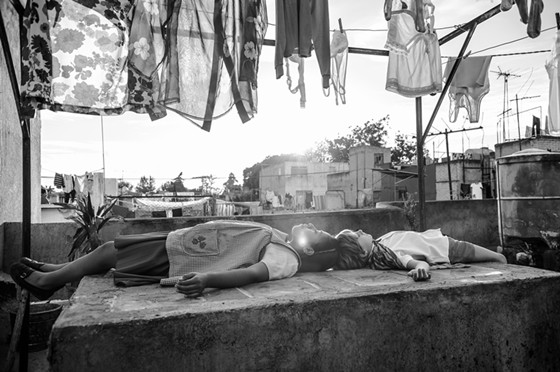
Roma was an astounding piece of filmmaking and a very important film, not least because it was delivered to millions of households across the world instantaneously. One of the amazing effects of Roma is that this film, about recognizing marginalised voices and stories, about a family unit pulling together, had a cultural moment akin to when an entire nation tunes in to watch a TV special at the same time.
However the amazing intricacies of Roma would only have been enhanced had we seen it on the big screen. Roma is a film that sits on the outskirts of a wider world; the world it exists in (the perspective of housekeeper Cleo) is no less interesting, but the point of view of being on the outside looking in makes for seriously impressive cinema.
Cleo’s position never allows her to fully know what’s going on; her space is in the hall, never in the bedrooms; in driveway but never in the car. Part of what creates this effect is the incredible soundscape. The full effect of the sound design may be lost in a home setting, but in a cinema we are treated to the full effect of how deep, layered and chaotic the world around Cleo sounds.
Couple this with the crystal clear and perfectly constructed cinematography and you have a film full of touching but incidental scenes that are informed and contained within a much wider context, albeit which is never fully explored. But as a result we see that the one constant is Cleo, who seems to be the only calming and reliable person in an increasingly crazy world. It is fantastic that Roma was enjoyed by so many people but it’s powerful cinematic effects would have only been increased had more of us seen it on a big screen.
5. Your Name
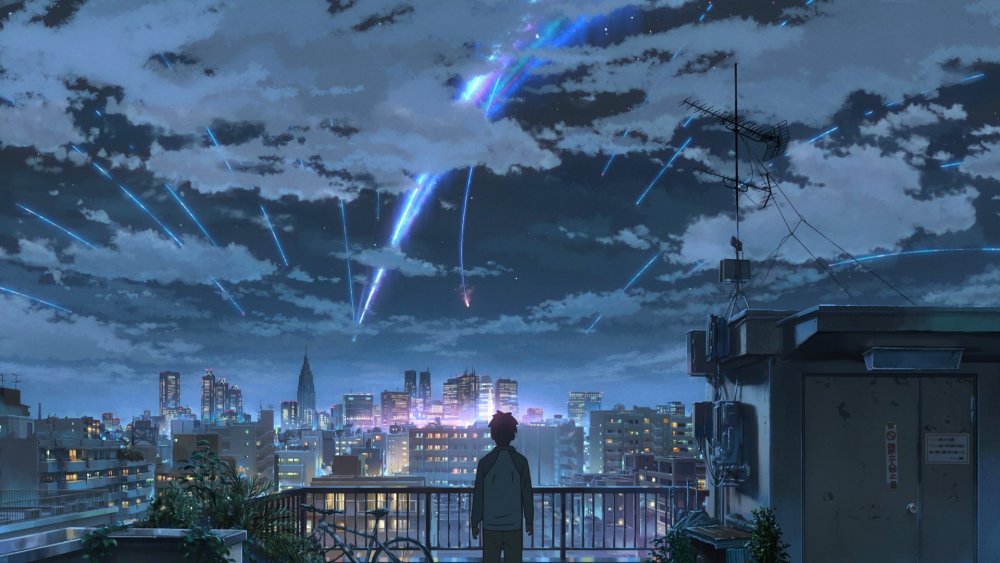
Only released a few years ago and it is the second highest grossing anime film of all time, and an American remake (whether you want it or not) is already in the works. Your Name comes with a lot of cinematic clout and it has a truly magical story and amazing characters to boot. Without giving too much away, Your Name begins as teenage body-swap comedy with Taki (a teenager from Tokyo) and Mitsuha (a teenager from rural Japan) routinely switching places. Your Name has a fantastic soundtrack and a very well executed and intricate plot.
Part of the magic of Your Name is that it has such an impressive realism and attention to detail it could have only been achieved in animation. The near perfect depiction of Tokyo and Mitsuha’s village makes ordinary cityscapes and villages seem magical. Originally released in IMAX the background art alone makes you wish you could see it on the biggest screen possible.
But also Your Name has a story with romance and tension that is almost straight out of classic Hollywood. It’s mixture of breath taking modern animation and classic story telling highlights one of the biggest themes in Your Name: remembering and respecting tradition in a world that keeps moving forward.